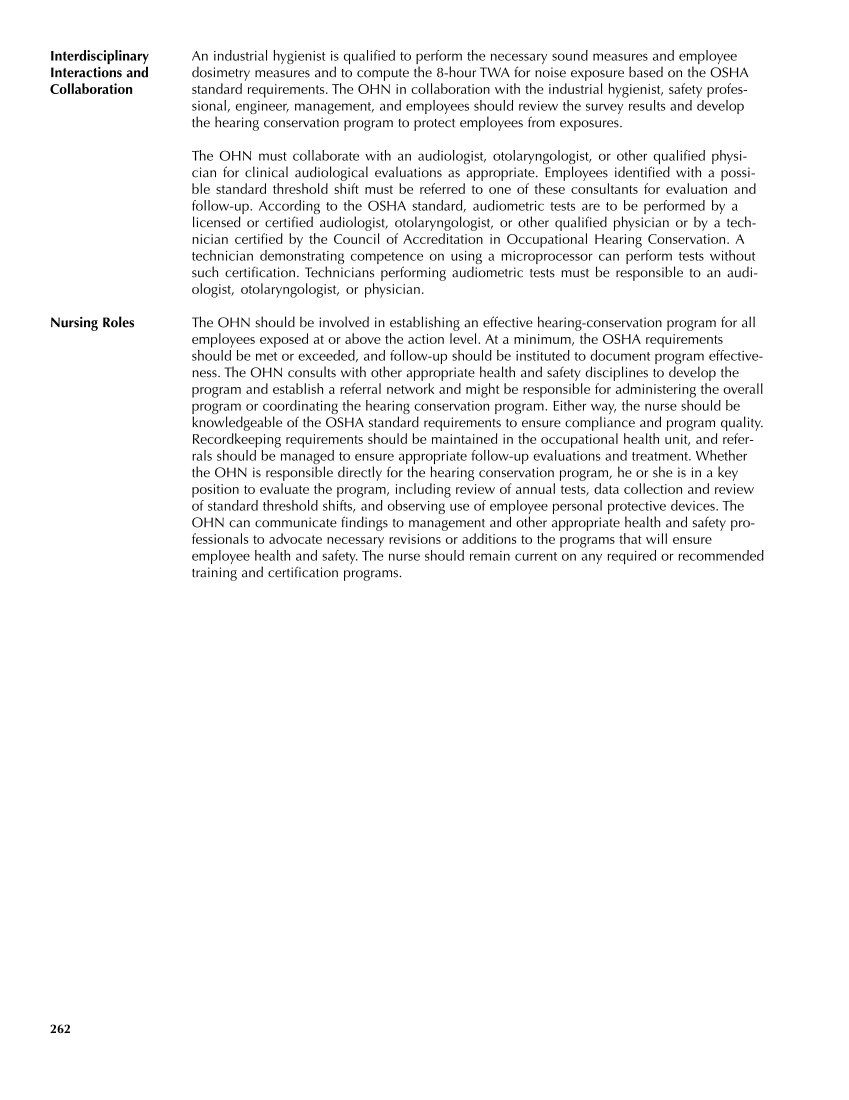An industrial hygienist is qualified to perform the necessary sound measures and employee dosimetry measures and to compute the 8-hour TWA for noise exposure based on the OSHA standard requirements. The OHN in collaboration with the industrial hygienist, safety profes- sional, engineer, management, and employees should review the survey results and develop the hearing conservation program to protect employees from exposures. The OHN must collaborate with an audiologist, otolaryngologist, or other qualified physi- cian for clinical audiological evaluations as appropriate. Employees identified with a possi- ble standard threshold shift must be referred to one of these consultants for evaluation and follow-up. According to the OSHA standard, audiometric tests are to be performed by a licensed or certified audiologist, otolaryngologist, or other qualified physician or by a tech- nician certified by the Council of Accreditation in Occupational Hearing Conservation. A technician demonstrating competence on using a microprocessor can perform tests without such certification. Technicians performing audiometric tests must be responsible to an audi- ologist, otolaryngologist, or physician. Nursing Roles The OHN should be involved in establishing an effective hearing-conservation program for all employees exposed at or above the action level. At a minimum, the OSHA requirements should be met or exceeded, and follow-up should be instituted to document program effective- ness. The OHN consults with other appropriate health and safety disciplines to develop the program and establish a referral network and might be responsible for administering the overall program or coordinating the hearing conservation program. Either way, the nurse should be knowledgeable of the OSHA standard requirements to ensure compliance and program quality. Recordkeeping requirements should be maintained in the occupational health unit, and refer- rals should be managed to ensure appropriate follow-up evaluations and treatment. Whether the OHN is responsible directly for the hearing conservation program, he or she is in a key position to evaluate the program, including review of annual tests, data collection and review of standard threshold shifts, and observing use of employee personal protective devices. The OHN can communicate findings to management and other appropriate health and safety pro- fessionals to advocate necessary revisions or additions to the programs that will ensure employee health and safety. The nurse should remain current on any required or recommended training and certification programs. 262 Interdisciplinary Interactions and Collaboration
Purchased from OEM Press by (ge corporate access). (C) 2013 OEM Health Information, Inc. All rights reserved.












































































































































































































































































































































































































































